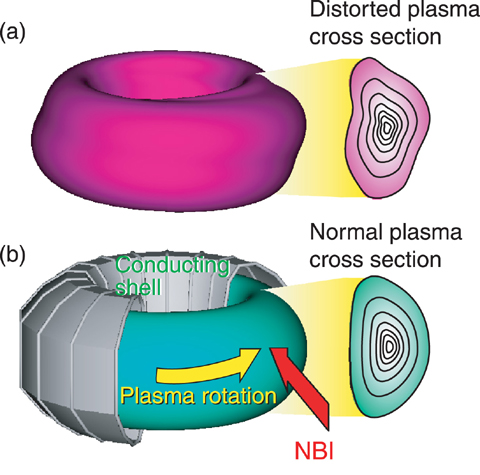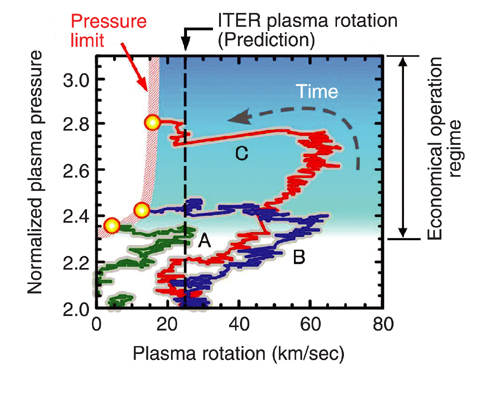
Fig.3-5 Schematic drawing of suppressing plasma distortion

Fig.3-6 Experimental results showing the required plasma rotation for suppressing the plasma distortion
To realize a fusion reactor with high fusion output power density (small size and high power output means an economical attractiveness), high pressure plasma (= plasma temperature × density) is required. However, the high pressure makes it hard to sustain the plasma confinement due to plasma distortion (Fig.3-5 (a)), and therefore, how the plasma distortion can be stabilized is a key issue in increasing the pressure limit. For this problem, a theoretical prediction was made that the plasma distortion can be suppressed by plasma rotation, which can be driven by neutron beam injections (NBIs), in a conducting shell. However, it should be pointed out that extra NBI could be required to gain enough rotation, because in "ITER" and future reactors it will be more difficult to drive the plasma rotation than in present tokamaks. For this reason, it is important to clarify the threshold of the plasma rotation which can suppress plasma distortion as well as making experimental verification of this theoretical prediction.
In almost all tokamaks, since the direction of NBI is only one direction, the power applied for high pressure plasma also causes large plasma rotation. Thus, a low plasma rotation in a simulation of a future reactor is difficult to realize in experiment. In contrast, since the JT-60U makes NBI in different directions, we can try to control the plasma rotation using a combination of NBIs while keeping the high plasma pressure. In consequence, we can realize similar plasmas with a low rotation in "ITER" and future reactors, and thus we can find the plasma rotation required to suppress the plasma distortion for the first time. The results are shown in Fig.3-6. In the three cases, A, B and C, the combination of NBI direction and power are different, and in each case power is adjusted over time. In this way, the plasma rotation at which the plasma distortion appears was successfully obtained. It was found that when the plasma rotation becomes less than 20 km/sec, the plasma began to distort and the confinement is degraded at the same time. This threshold of plasma rotation is only about 15% of the theoretical prediction. These results indicate that we can operate in an economical regime where the plasma rotation is quite sufficient to suppress the plasma distortion even if the plasma rotation is low as predicted in "ITER" and future reactors.